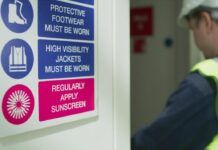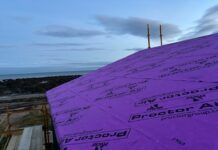The final wall cladding combination tested as part of the Government’s series of fire safety tests passed and meets current Building Regulations guidance.
This final test was of a wall cladding system consisting of Aluminium Composite material (ACM) cladding with a limited combustibility filler (category 1 in screening tests) with stone wool insulation.
The Government’s expert panel has advised that the results show that this combination of materials can be compliant when installed and maintained properly. While Government says it has not been informed of any tall buildings over 18m in England using this particular combination of materials in their wall system, it could offer a possible solution for some buildings with other cladding systems which have been identified as a fire hazard through previous large-scale tests.
The clear advice from the expert panel remains that building owners need to continue to take professional advice regarding remedial work that takes into account the specific circumstances of their building.
The purpose of this testing programme is to develop a better understanding of how different types of cladding panels behave with different types of insulation in a fire. This is so building owners and their professional advisors can make informed decisions. Results of all seven large-scale tests are available and Government says it will shortly publish consolidated advice to landlords based on all the seven tests.
All seven tests and the results are shown below:
- Cladding system formed using ACMpanels with an unmodified polyethylene core and a rigid polyisocyanurate foam – does not meet the criteria set out in Building Regulations.
- Cladding system formed using ACMpanels with an unmodified polyethylene core and a stone wool insulation – does not meet the criteria set out in Building Regulations.
- Cladding system formed using ACM panels with a fire-retardant polyethylene core and a PIR foam insulation – does not meet the criteria set out in Building Regulations.
- Cladding system formed using ACM panels with a fire-retardant polyethylene core and a stone wool foam insulation – can meet Building Regulation criteria.
- Cladding system formed using ACMpanels with a limited combustibility filler with PIR foam insulation – can meet Building Regulation criteria.
- Combination of ACM cladding with a limited combustibility filler (category 1 in screening tests) with stone wool insulation – can meet Building Regulation criteria.
- ACM with fire retardant polyethylene filler (category 2 in screening tests) with phenolic foam insulation – does not meet the criteria set out in Building Regulations.
So far, 228 residential buildings over 18m have been identified to be fitted with cladding systems that fail the fire safety tests.
The Government announced an independent review of Building Regulations and fire safety on July 28, 2017. This forward-looking review will examine the regulatory system around the design, construction and on-going management of buildings in relation to fire safety as well as related compliance and enforcement issues.



